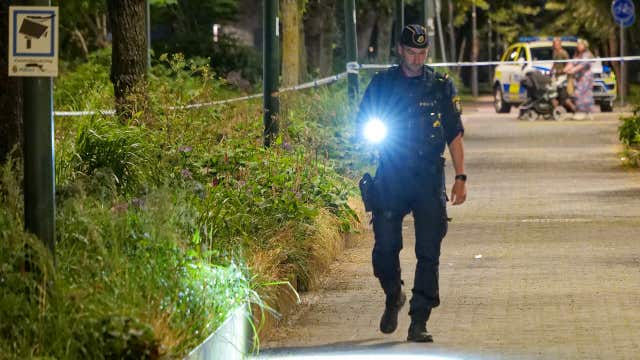Summer infections are increasing – warn of stomach illness
Stomach ache with diarrhea, nausea, fever and severe stomach pain.
It’s campylobacter season – a nightmare for every vacationer.
But there are ways to avoid the bacteria.
– We see an incredible correlation between the occurrence in chicken and the number of people affected, says Rikard Dryselius, investigator at the Swedish Public Health Agency.
Campylobacter is the most common bacteria that causes stomach illness in humans. At least 7,000 Swedes are affected each year.
And summer is the worst period.
– There is always an increase this time of year. It is incredibly seasonal, says Rikard Dryselius, investigator at the Swedish Public Health Agency.
Since the beginning of June, the number of people falling ill has more than doubled.
The bacteria causes severe diarrhea, nausea, vomiting, fever, headache and severe stomach pain – symptoms that, in the worst case, risk ruining your vacation.
But there are ways to avoid the nightmare.
Chicken is critical
One way is to be careful with the handling of chicken.
– We see a very strong correlation between the occurrence in chicken and the number of people affected, he says.
He estimates that around ten percent of all chickens in the summer have campylobacter, but thinks that one should assume that all chickens are infected – and be extra careful with hygiene.
– You should have your own cutting boards for chicken that you wash carefully. If you grill in the summer, you should avoid using the same dish before and after, and not use the same tools when handling raw and cooked chicken, he says.
Even very small droplets can cause infection – and it’s difficult to manage.
– They did an experiment in Denmark a few years ago where they put a fluorescent substance on a chicken while a family was cooking. Then they shone the light and saw where the chicken droppings ended up. It was everywhere, on the oven, on all the benches, says Rikard Dryselius.
Common during mountain hiking
There are also other sources of infection. 1 in 20 who fall ill during the summer months are estimated to be mountain hikers.
– It’s delicious to drink cold water from mountain streams. But if animals upstream, such as birds, have defecated, then you can get infected.
He recommends using filters when drinking from mountain streams.
Another source of infection is unpasteurized milk, and you should be vigilant if you have your own well.
Municipal drinking water should be safe, says Rikard Dryselius.
– I do remember an outbreak in Skåne in the 1980s. At that time, a colony of seagulls had built a nest on a water tower, and there were also cracks in the roof. The water went to a lot of people, I think 10,000 got sick. But the infrastructure is better today, he says.
The infection rate is expected to decrease in October or November.
– In December and January there is not much, and then it is quiet until May and then it starts again.
How to avoid Campylobacter
Always wash your hands with soap and water before you start cooking and always immediately after touching raw meat or using used knives and utensils, as well as contaminated cutting boards and countertops. Dry your hands with a clean towel or paper towel.
Keep raw chicken meat separate from other foods, especially those that are ready to eat, such as vegetable salad.
Do not rinse the chicken under the tap. Splashes of campylobacter can then spread to food, utensils and surfaces.
Wash knives and cutting boards thoroughly after cutting raw meat. This will prevent bacteria from being transferred from one food to another.
Use a moderately strong stream of water when washing hands or rinsing dirty cutting boards and utensils to avoid splashing onto surfaces, other foods in the kitchen, and yourself.
Keep the workbench clean, wipe up meat juices with paper towels – not the dishcloth.
Always cook chicken thoroughly – this will kill any bacteria that may be present in it.
Source: Swedish National Food Agency
Source: Swedish National Food Agency





